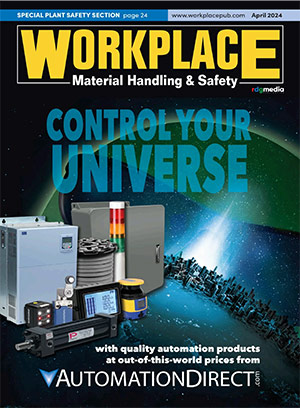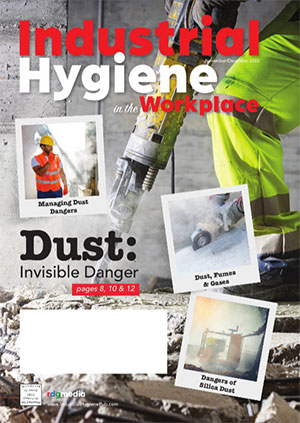The Rules for Automated Material Handling Project Justification Have Changed
John T. Phelan, Jr., P.E., Contributing Editor
One of the outcomes that The Great Recession provided many companies was a more stringent and objective means for justifying capital projects. As such, the rules required to approve an automation project within the warehouse or distribution center have changed for the foreseeable future.
Recognizing the new rules for justification will not only help the process of continuous improvement within a company’s operations; it will also help minimize the risk of negatively impacting the bottom line when deciding if a project is worth the investment.
Cost Savings vs. Cost Avoidance
By definition, cost savings means reducing current costs, while cost avoidance means reducing to possibility of incurring future costs. When most companies were reacting to the falling economy, the emphasis on automated material handling project justification was cost savings. Typically, this was done by installing equipment that replaced existing labor, and the associated labor savings would pay for the cost of the equipment in one to three years.
The result of companies laying off workers, due to decreased demand or because they implemented automation projects, was that they became as lean as possible in order to fulfill their mission—a good strategy for most. However, with hardly any labor costs remaining to use cost savings as primary justification, we are now shifting focus to cost avoidance.
Conveyor
Fortunately, since the recession is in the rearview mirror for most business, distributors are not only trying to fulfill orders with their current workforce, but also planning on growth scenarios and the associated operational challenges. As our economy rebounds and the unemployment rates continue to drop slowly, more and more companies are getting comfortable with adding to their workforce.
However, getting approval to fill vacancies or creating new positions isn’t as easy as it used to be, since some front-line or mid-level managers are still a little gun shy about requesting to add to the workforce in preparation for future growth. As such, a possible, more acceptable alternative would be to provide an argument to avoid adding labor by automating some processes.
Psychologically, it is probably a little easier for management these days to accept investing in automated equipment as opposed to investing in people, especially since so many of these managers had to go through the painful layoff process and don’t want to put themselves in a position to have to do it all over again. Since you can’t fire or layoff a conveyor system (just run it less often), finding the means to avoid hiring labor—but still adapt to growth provides the justification advantage.
Known Costs vs. Unknown Costs
With continued uncertainty related to global political and economic stability, as well as our own domestic challenges, all of which affect market conditions, it would seem reasonable to assume that we know more about expenses associated with capital equipment compared to expenses associated with future employee costs. Using normal equipment depreciation schedules, along with conservative maintenance budgets, the annual costs to a company for capital equipment is very known and stable. In fact, the probability that the administration will provide tax advantages to those businesses that invest in capital equipment is pretty high. This can increase domestic manufacturing demand and decrease the unemployment figures. Conversely, the costs associated with adding employees in businesses today are a little more difficult to grasp, as there are so many unknowns in our future environment based on the current economic situation. Healthcare costs, additional Social Security taxes, unemployment taxes, payroll taxes and other employee-related costs are potential liabilities that, when compared to capital equipment, are far more unknown and thereby add risk to the strategy of avoiding future costs.
Return on Investment, Interest Related Calculations vs. Traditional Payback Method
Traditionally, companies used the most basic method to calculate the return on investment and financially justify a capital project by simply performing a payback method. As previously stated, this was done by dividing the cost of the project by the annual cost savings that the project provided. This resulted in a number of years that the project would pay itself back and, for most companies, the threshold was somewhere near two to three years.
Nowadays, the financial conditions are so much different than ever before, specifically relating to interest rates and the cost of capital, so the old basic method on justification should not be considered, since it doesn’t take into account these important variables. Rather, using either Net Present Value (NPV) or Internal Rate of Return (IRR) would be more suitable in today’s environment.
The NPV method is based on the evaluation of the discounted cash flow as a result of the project. To find the NPV, the present value of each cash flow, including the negative cash flow resulting from the initial cost of the project, and discount all other cash flows at the project’s cost of capital, r. We then sum these discounted cash flows and determine the NPV. If a project has a positive NPV, then it adds value to the company. The formula for the five-year NPV is as follows, where FCFn means Future Cash Flow at the specific year, n, while r is the cost of capital:
The Internal Rate of Return is defined as the discount rate that forces the NPV to equal zero. The purpose for analyzing the IRR is to determine if the discount rate that forces the NPV to equal zero is more than the “hurdle rate,” which is common for companies to be their cost of capital, r. For example, if the cost of capital is 10% and a project’s IRR is 15%, then implementing the project would be a beneficial investment to the company. The formula for the five-year IRR is as follows:
Both of these equations are extremely simple to calculate, provided in a spreadsheet using standard commands provided that the variables are known. Every company has their own specific Cost of Capital. This is because the formula to calculate it is complex; typically, however, it has a direct relationship with the risk-free rate of return which most people consider to be the 10-year Treasury bill, which is and will continue to be extremely low.
As an example, a project that costs $1MM and provides $275K in annual savings for a company with a Cost of Capital of 10% would have an NPV of $270,832 and an IRR of 11.65%. Both of these would seem acceptable for project justification, whereas using the traditional payback method would yield 3.64 years—which might be on the fence for a lot of businesses.
In summary, just like most aspects of doing business have been altered as a result of the economic situation, so have the means for justifying capital projects in a warehouse. Since continuous improvement is the only option for distributors to stay competitive, then incorporating automated material handling systems at some point is required. So, understanding and utilizing new strategies in developing the justification might provide the advantage that gets the project approved and the business properly positioned for profitable growth. WMHS
John T. Phelan, Jr., P.E., is Chief Operating Officer of TriFactor, LLC, a material handling systems integrator based in Lakeland, Fla. He can be contacted at 863-577-2243 or jjphelan@trifactor.com. For more information visit www.trifactor.com.



